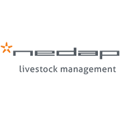 When it comes to finding open sows in a gestation pen, you can’t find a better tool for the job than a healthy boar. But the traditional practice of walking a boar is time consuming and potentially dangerous. One way to improve the safety and efficiency of heat detection in a group sow housing facility is automated heat detection technology.
When it comes to finding open sows in a gestation pen, you can’t find a better tool for the job than a healthy boar. But the traditional practice of walking a boar is time consuming and potentially dangerous. One way to improve the safety and efficiency of heat detection in a group sow housing facility is automated heat detection technology.
“Automated heat detection using an enclosed boar within a group gestation pen is safer and more accurate than the traditional method of walking the boar,” says Brad Carson, group sow housing expert and vice president of Nedap Livestock Management U.S. “Automated heat detection is an excellent complement to electronic sow feeding systems (ESF), giving sows the ‘best of both worlds’ by combining the potential performance benefits of group housing with the precision of individual management.”

Safety first
Identifying open sows within a gestation pen is a necessary part of managing sow barns, but walking a boar can be a risky business for people and pigs in group housing situations. Automated heat detection with enclosed boar pens eliminates the safety risk and makes the process easier.
Using technology to record changes in sow behavior, automated heat detection identifies when behavior indicates the sow is in heat. The technology records how often a sow engages with a boar and the length of each interaction and identifies when the interactions reach a threshold of heat behavior.
From inside his “bachelor pad,” the boar’s only means of interaction with sows is nose-to-nose through a small opening.
“This minimal interaction provides a sow with the necessary pheromonal stimulation to express heat behavior if she is in estrous while still being safe for the sow, boar and employees,” Carson says.
Fast and accurate
Safety is paramount, but labor efficiency is also important if you want to make the most of your investments. Walking the boar to identify sows in heat takes the time and attention of at least one employee daily. Using automated heat detection eliminates this task because roles are reversed. The sows do the walking past the boar and don’t need assistance, leaving the employee available for other tasks.
Automated heat detection also improves operational efficiency through greater accuracy. When walking a boar, employees might interpret signs of heat differently. Automated heat detection eliminates inconsistency and quickly identifies open sows for rebreeding or culling consideration. This minimizes the chance of open sows staying within the gestation group, wasting valuable farm resources including time and feed.
“I work with one farm that has compared performance data between individual gestation crates and group gestation pens with ESF while they transition to group housing,” Carson says. “Their experience indicates automated heat detection in their group pens is the most efficient method.”
Designed for success

One key to successful automated heat detection is the right gestation pen design. Pens should be designed to minimize aggression with ample room for movement between eating and resting areas. The boar pen should be located on the path your sows walk daily so the sows are consistently exposed to the boar. Another key to success is the functionality of the heat detection system. Some automated systems can flag a sow with paint, automatically separate her from the group or send you an alert that the sow is in heat.
“Look for a heat detection system that helps you meet your production goals and supports your management style without adding labor costs or stress to employees or animals,” Carson says. “It is possible to have the best of both worlds – providing individual sow care along with the benefits of group housing. Automated heat detection is one tool to help get you there.”
April 21, 2017 - NEDAP




